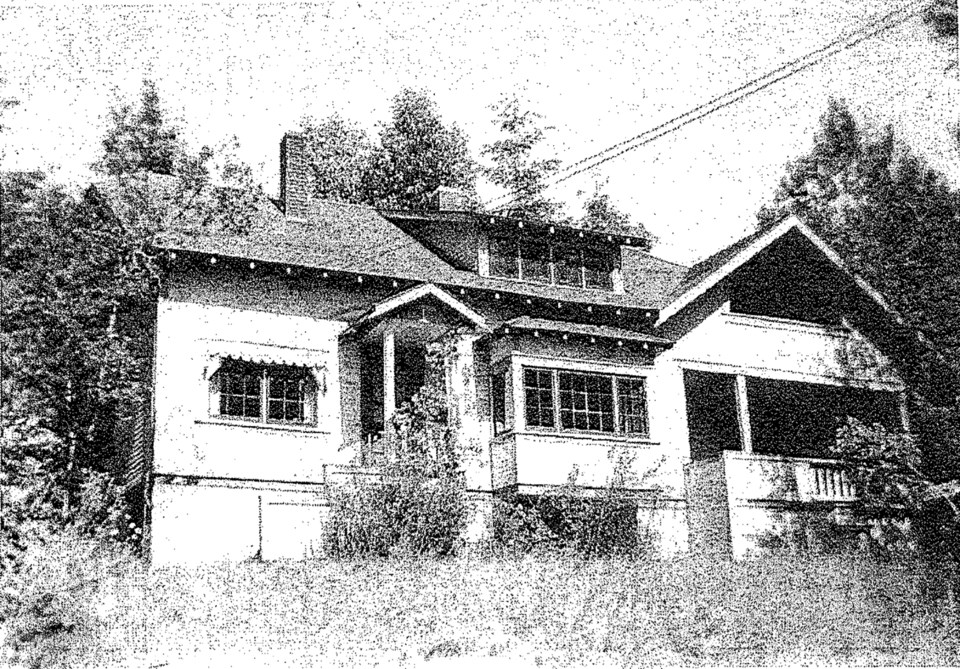The heritage component of the Sechelt Arts Festival, to be held in October, will display a number of homes of historic and or architectural significance, including this pictured home in Selma Park.
The old saying, “If these walls could talk” is true of this edifice.
George H.R. Aman built it in 1928 on the Sunshine Coast Highway in Selma Park. He worked for Herbert Whitaker from 1902 until Herbert’s death in 1925 and then became postmaster and the first resident manager in Sechelt for the Union Steamship Company Estates.
George was overall manager of the store, hotel, dance pavilions, bath house, boat and cottage rentals, tennis and badminton courts and picnic grounds in Sechelt and Selma Park and kept the precipitation records for Sechelt – a busy man! His house was painted in the Union Steamship Company colours, black and yellow.
Helen Dawe’s records say George came out from England and a photograph in his album is of the “Departure of the of Vancouver Contingent ‘Strathcona Horse’ for South Africa February 1900” signed Edith Aman. Was this his wife and did he serve in this regiment in South Africa? More research is needed!
The British Columbia Directory records George H.R. Aman, retired, and living in Selma Park from 1931 to 1941.
Helen Dawe records he was in Shaughnessy Veterans Hospital for a number of years and that he died in the early 1950s.
The second owner of this house was Isobel Gilbert, daughter of George’s friend and employer Herbert Whitaker. She bought the house and moved in with her one-year-old son Nick in 1941 after her husband Del Gilbert joined the Canadian Air Force.
He had been a well-liked teacher in Wilson Creek and first principal of the Sechelt United School. He was killed in Egypt in 1944.
Isobel continued to live in the Selma Park house, operating a small gift shop for a short time, renting rooms to VON nurses and finally working for the B.C. Electric Company in Sechelt. She was the fourth woman pilot in B.C., earning her license in 1933. She moved to Vancouver in 1964 and died in 1976.
Isobel’s son Nick has fond memories of the house “remembering best the protruding window seat in the front room, that offered comfort and light when resting, reading or recovering from some childhood illness. The upstairs enclosed porch offered warmth, shelter and a great view of the Trail Islands and the boat traffic, notably the tugs and booms tied up in a storm.”
Nick remembers too that the house was not insulated; it had a fire place in the living room and a wood stove in the kitchen (later both were converted to oil burning stoves) but it wasn’t until Isobel installed an oil floor furnace in the hall that the house was warm in winter. Clothes were washed by hand and Isobel and Nick walked or cycled to Sechelt for supplies always accompanied by their dogs.
Later owners of George and Isobel’s historic home have taken good care of it.
This has been a well-loved home from 1928 until today and its walls still have stories to tell as do the walls of the other houses that will be on display in October at the Sechelt Arts Festival.



